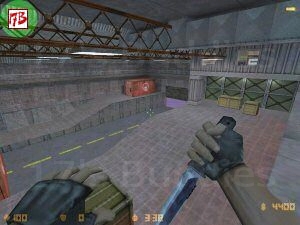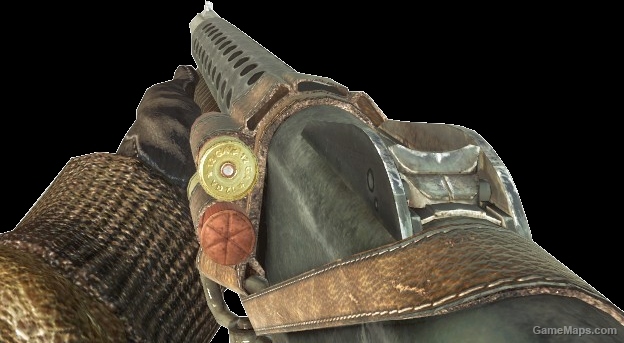Here we shall have a look at the ten best maps ever made for Counter Strike. #10 aimheadshot. As the name suggests, this meant for blowing your opponent’s head off! Players are allowed to. Counter-Strike: Source - CS: Survivor 2 v.1.4 - Game mod - Download. The file CS: Survivor 2 v.1.4 is a modification for Counter-Strike: Source, a(n) action game. Download for free. File type Game mod. File size 1515.7 MB. Last update Sunday, January 13, 2019. Downloads (7 days) 11.
- Counter Strike Add Bot
- Counter Strike Bot Commands
- Counter Strike Source Maps With Bots Download Torrent
- Counter Strike With Bots Download
- Counter Strike Bots
- Counter Strike Source Maps With Bots Download Free
Lighting and Shader Improvements
C&C Red Alert 3 Counter-Strike: Global Offensive Counter-Strike: Source Garry's Mod Half-Life 2 Left 4 Dead Left 4 Dead 2 Minecraft Portal 2 StarCraft: Brood War Maps Guides Upload. This is a counter strike source bot. Download: Click on icon next to each track or the 'FULL BOARD ' button to add to your cart Per Track: $0.99 or FULL BOARD $4.99. Counter-Strike: Source is a first-person shooter in which you will be able to take part in the fight against terrorism. Using a wide range of different weapons, players can choose between several addictive game modes and test their skills.
With the introduction of new maps, models, and assets come a number of visual upgrades and features that we think mapmakers and community content creators alike will find useful and exciting. The following is an overview of these features and how they can be enabled in your own maps and content.
- Lighting Improvements
- New Shader Features
One of the areas that we upgraded extensively during the development of Nuke was the in-game lighting. With Nuke’s new look, we strived for a clean, colorful aesthetic with bold, realistic lighting and global illumination.
Then in light_exe (VRAD) make sure you have the parameter
-StaticPropLighting
-final is the equivalent of having -StaticPropLightingScale 16. We recommend you try some different values and see which one works best for you.
To tackle this problem we separated all direct and indirect precomputed lighting data and use these two data sets to accurately blend our cascade shadow maps into the scene. This allows indirect and ambient lighting to alter the shadow color and strength in a much more natural way:
To enable this feature, add the following lines to your material (.vmt file):
'$phong' '1' //Enables phong highlights
'$phongexponent' '60.0' //how sharp the highlight is 1=soft 100=sharp
'$phongMaskContrastBrightness' '[2 .7]' //increases the contrast of the phong mask
'$phongAmount' '[10 10 10 1]' //RGBA values that can boost, tint or lower highlight strength
Note that this should be used with the LightmappedGeneric and WorldVertexBlend shaders.
'$decaltexture' 'yourdecaltexture' //path to you decal texture
'$decalblendmode' '0' // controls blending of decal: 0=alpha masked 1=multiplied
Note that this should be used with the VertexLitGeneric shader.
'$addbumpmaps' '1' //enables bumpmap blending
'$bumpmap' 'texture' //bumpmap texture 1
'$bumptransform' 'center 0 0 scale 1 1 rotate 0 translate 0 0' //scale & rotation of bumpmap 1
'$bumpdetailscale1' '1' //Controls how strong bumpmap 1 is (0-1, 0=off 1=full)
'$bumpmap2' 'texture' //bumpmap texture 2
'$bumptransform2' 'center 0 0 scale 1 1 rotate 0 translate 0 0' // scale & rotation of bumpmap 2
'$bumpdetailscale2' '.5' //Controls how strong bumpmap 2 is (0-1, 0=off 1=full)
Note that this works on the lightmappedgeneric shader. When a $detail texture is also used with $detailscale, it will override the '$bumptransform2' parameter.
'$envmap' 'env_cubemap' // A cubemap is needed for this to work
'$envmapanisotropy' '1' // Enables cubemap anisotropic filtering
'$envmapanisotropyscale' '1' // Amount of ‘stretching’ that should be applied (0-1)
Note that this works with the LightmappedGeneric and WorldVertexTransition shaders

Counter Strike Add Bot
'$envmap' 'cubemaptex' // Name of cubemap texture (envcubemap for auto)
'$envmaplightscale' '1' // (0-1) How much lighting influences the cubemap
'$envmaplightscaleminmax' '[0.0 0.3]' // [min max] How strong the reflections should be
'$envmapsaturation' '0.2' // (0-1) How saturated the reflections should be
This works on a variety of shaders, including LightmappedGeneric, WorldVertexTransition and VertexLitGeneric.
'$dropshadowopacity' '1' //How strong the highlights and shadows should be
'$dropshadowscale' '0.0125' //The size in UV coordinates of the drop shadow
'$dropshadowhighlightscale' '0.0125' //The size in UV coordinates of the drop highlight
'$dropshadowdepthexaggeration' '1' //Use the depth in the blend modulation texture to vary the size of the drop shadow. Creates a more organic look. May require increasing the drop shadow scale.
Note that this only works when your blend material has normal maps, a blend modulation texture and your shader settings on high. It is visible in direct lighting from the light_environment entity, so is best used on outdoor areas.
As an added bonus you can find a new map in the latest CS:GO SDK that contains all of the modular systems and assets created for Nuke so that you can easily see examples of how they can be combined and customized and get started using them in your own maps today. Simply navigate to Steam
Posted by Admininstrator into English / CS:S, 07-02-2015, 22:29
Counter-Strike: Source is a classic shooter where you can choose to be a terrorist or a policeman. The game was developed by Valve Corporation and millions of people all over the world are playing it for years. In this game, like other CS series, every round is won either by completing objectives (blowing up bombs or rescue hostages) or by killing all members of the opposing team.System Requirements:
Operating System: Windows 2000 / XP / Vista / 7 / 8
Processor: Dual Core 1.7 GHz
Memory: 512 MB minimal
HDD: at least 2GB Free Space
Video Memory: 64 MB lowest, 512MB recommended
Network: 256 Kbps
 Internet Connection for Multiplayer
Internet Connection for MultiplayerOf course, Sound card, Keyboard and Mouse.
CS: Source was developed using new (Source) game engine and released in 2004 along with Half-Life 2. In comparison with Counter Strike 1.6 it has better graphics and physics, but higher system requirements. Player models and map are much better then in previous versions. The world became more realistic. Players have more weapons to kill each other.
Unlike Half-Life: Source, the CS:S is a complete remake instead of a port with additional content.
You can download Counter Strike : Source for free without registration and start yo play immediately after installation.
To install game, download CS:S installation package directly or via torrent and launch the executable. After installation which can take from 1 to 10 minutes (depends on your HDD speed) run the game using shortcut on your Desktop.
When you will enter the game it's better to change nickname use in game-console: setname 'your name' or clicking main menu Options -> Multiplayer. You can use your native language in your nickname.
Just select a server in 'Find Servers' -> 'Internet' and start playing.
Source V34 was released 3 December 2009 so it is rather old. Nevertheless, it works faster on older PCs and takes 2 times less RAM. Significant part of code and technologies was inherited from older versions. All game resources like models and maps are located in a separate files. As for Source V84 it has better graphics and higher system requirements. Game resources are located in huge VPK files. The score board looks much better then in V34.
There are much more players using latest version and much more game servers. But, some people still enjoy playing old game at old servers.
You may check next screenshots to decide which game version do you want. Left picture is V34, right is V84
Counter Strike Bot Commands
During years different versions of CS:Source were developed, but the most popular are CSS v.34 and the latest version CSS v.84. We provide you both of them for free. Download CS:S without registration.
Counter Strike Source Maps With Bots Download Torrent
- Network protocol version 7
- Exe version 1.0.0.34 build: 17:27:58 Dec 3 2009 (4044)
- Native support of your native language in nickname, chat and console
- Actual game server list (no 'Steam validation rejected' or invalid version errors)
- Now you have a huge list of Internet servers (>1000) worldwide without waiting for 1 minute.
- Slow hacking protection
- Bots included
- New logos
- Windows XP/Vista/7/8 compartible
- Multilanguage Support
Download size : 1.44 Gb
- Network protocol version 24
- Build Label: 2234230
- Network PatchVersion: 2230303
- Native support of your native language in nickname, chat and console
- Actual game server list (no 'Steam validation rejected' or invalid version errors)
- Now you have a huge list of Internet servers (>1000) worldwide without waiting for 1 minute.
- Slow hacking protection
- Bots included
- New logos
- Windows XP/Vista/7/8 compartible
- Multilanguage Support
Counter Strike With Bots Download
Download size : 1.44 Gb
Counter Strike Bots
Enjoy our stable clients on your native language! If you have any questions feel free to ask in the comments or feedback form.Counter Strike Source Maps With Bots Download Free
Viewed: 223540, Comments: 2
